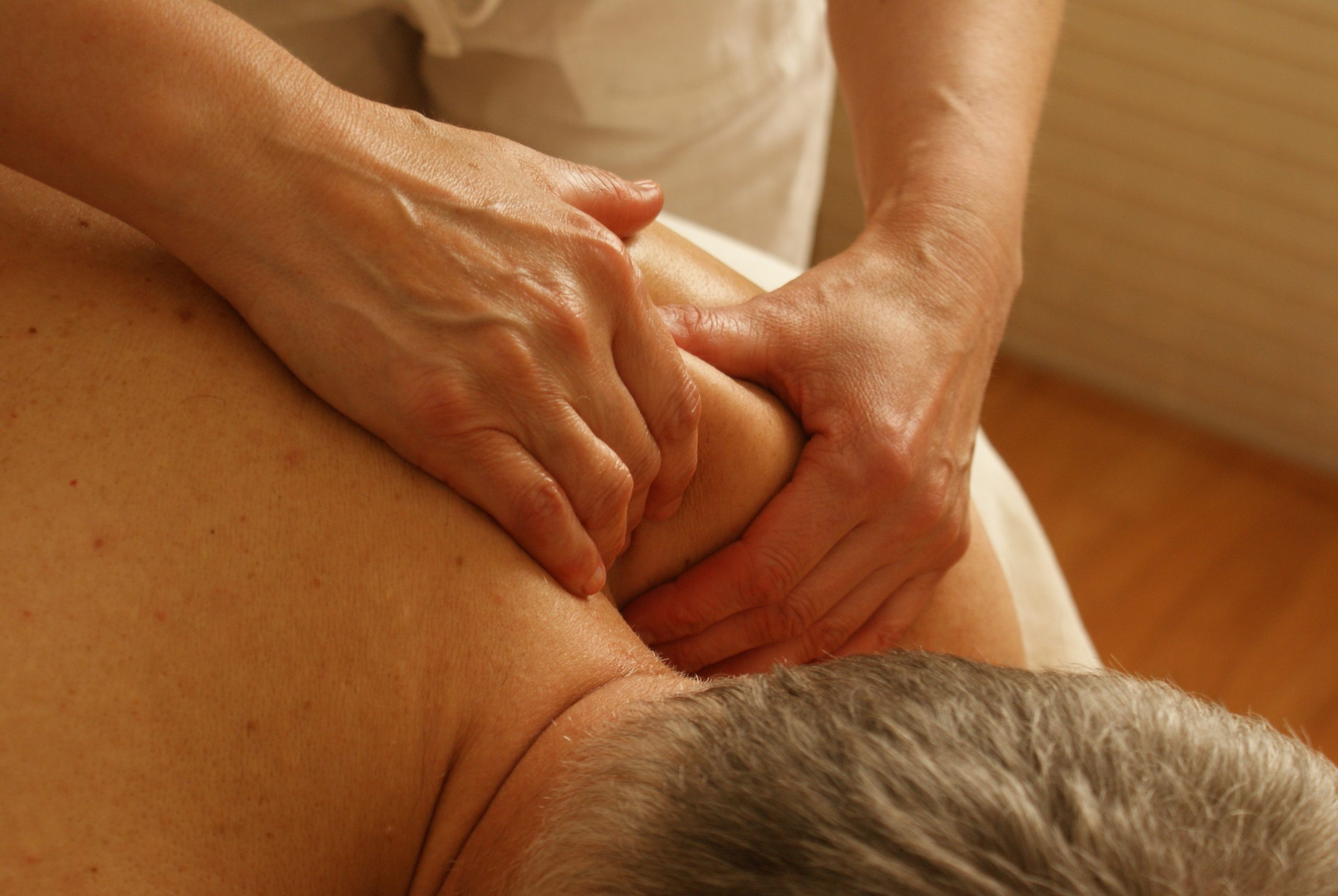As a massage therapist, you are trained to treat the human body. And If you own your own practice, you are most likely well versed in business, too.
However, what about those “awkward massage moments” your training may not have sufficiently prepared you to handle professionally?
The innate nature of massage therapy puts both you and your client in vulnerable positions. We don’t have to tell you that your clients are typically lying naked on your massage table with nothing but a sheet or towel covering their most intimate areas.
Your job is to then perform a service that, by its very nature, helps them achieve a state of relaxation that may cause their bodies to naturally react. Then there are those moments of unsavory human behavior that may be a little more than you signed up for when you decided to be a massage PROFESSIONAL.
To help you get through those awkward moments, we’ve put together a few of the most common scenarios you may experience and how to handle them like a pro.
For a brief introduction, we recommend watching the video below:
Awkward Massage Moments You May Encounter
When it comes to awkward massage moments, it will behoove you as a massage therapist to be prepared. Let’s explore 5 potential awkward massage moments you may encounter and how to handle them professionally. This can help you both avoid embarrassment, and in the worst cases, avoid licensing suspension.
Scenario #1: Erections and requests for “happy endings”
 This scenario is probably one of the most talked-about awkward moments a massage therapist will regularly experience in his or her career. Sure, the job you perform may reduce muscle tension, joint pain, and even anxiety. But it is also a highly pleasurable experience that puts your clients into a state of relaxation and bliss, which may be associated with intimacy.
This scenario is probably one of the most talked-about awkward moments a massage therapist will regularly experience in his or her career. Sure, the job you perform may reduce muscle tension, joint pain, and even anxiety. But it is also a highly pleasurable experience that puts your clients into a state of relaxation and bliss, which may be associated with intimacy.
As a result, your male clients could become aroused. While an erection is typically a physiological response to arousal, it does not necessarily indicate sexual desire. Touching any part of the male body can activate the parasympathetic nervous system including vasodilation of the sacral nerve area.
While you may be uncomfortable with this reaction, you are not the only one who may experience embarrassment. The fear of getting an erection during a massage keeps some men from seeking out massage therapy, so your response to this scenario is vital. You can reduce your clients’ embarrassment simply by normalizing the situation or ignoring it.
What to do: The first thing to do is remain calm. Ben E. Benjamin, Ph.D. and Cherie Sohnen-Moe describe appropriate steps to follow in their book, The Ethics of Touch: The Hands-on Practitioner’s Guide to Creating a Professional, Safe and Enduring Practice, using what they call, “The Intervention Model.”
The Intervention Model gives the following points:
1) Address the situation assertively. Stay relaxed with a good posture and re-adjust the drape over the client, reinforcing professional boundaries.
2) Verbally describe the situation so your client knows you are aware of it without passing judgment. You can say something like: “I noticed you are tensing up when I pass over this area. Would you like to cover up?”
3) Clarify your client’s intention and ask them how they are feeling or what they’re experiencing. Wait for their response. If you have any fear of inappropriate or unwanted behavior, make sure you have access to the door so you can quickly vacate the room if necessary.
4) After your client responds, use calm language to educate your client, again without judgment. Explain to them that unexpected physiological reactions to massages are actually quite common and that there’s no need to be embarrassed.
5) In the event that the client’s intentions are clearly erotic (e.g., someone asking for a “happy ending” or “extra service”) re-state that your intent is not to cause sexual arousal. You can use a phrase like: “I want to clarify that this is a non-sexual massage. If you are looking for something else, I will end your massage now.”
Some clinicians deflect requests with humor or feigning naiveté by saying something like “I charge $50 extra per extra service. Would you like the aromatherapy hot towel treatment, hot stones, or a guided meditation?”
To avoid awkward moments like these, some clinicians even hang signs in their office that say, “This is not THAT kind of massage.”
6) Evaluate how to proceed. If the client does not have any sexual intent, re-state that you are there to perform a professional service and continue working.
If the client makes any sexual comments or advances, end the session immediately and leave the room.
Be sure to document in detail the events that led you to terminate the session. If you feel that the client crossed the line to sexual assault, you are within your rights to file a police report.
7) If you are not comfortable seeing the client again due to an accidental erection, you can refer him to another massage therapist—or speak to your supervisor about a referral if you are an employee of a group practice or hospital setting. Either way, be sure to document the incident for future appointments to prepare the next massage therapist.
Scenario #2: Bodily functions—from flatulence to moaning
 The pleasurable, calming nature of a massage can cause the human body to relax, which can lower clients’ inhibitions and control over bodily functions. Like erections, this is also caused by the parasympathetic nervous system slowing down the body’s response system. You may hear clients making moaning noises that sound sexual in nature, hear giggling, or even hear (or smell) clients passing gas.
The pleasurable, calming nature of a massage can cause the human body to relax, which can lower clients’ inhibitions and control over bodily functions. Like erections, this is also caused by the parasympathetic nervous system slowing down the body’s response system. You may hear clients making moaning noises that sound sexual in nature, hear giggling, or even hear (or smell) clients passing gas.
As a trained massage therapist, it’s your job to handle these scenarios with care and professionalism.
What to do: While these bodily functions might embarrass the client or cause you to laugh, they are perfectly normal and can actually be considered a compliment, as it implies the client is relaxed.
Moaning and grunting can help release the tension in the body and express enjoyment of the sensations the client is experiencing while you are relieving tight, muscular discomfort.
The key is to not cause your clients any further embarrassment or to draw attention to the noises they make.
While your clients may have more control over verbal cues, like moaning and grunting, passing gas can be an accidental and highly embarrassing situation for them. As a massage therapist, the recommended action is to do nothing and keep performing your job.
Do not comment and try not to laugh. If you need a moment to regroup yourself, you can find a good excuse to walk away briefly (e.g., changing the music, grabbing a massage oil bottle, or getting a towel). If your client apologizes and appears embarrassed, the best course of action is to reassure them that it’s perfectly natural and it doesn’t bother you.
Then continue working as usual.
Curious about CBD Clinic™ topicals?

Scenario #3: Poor hygiene
Ideally, clients will arrive to their appointments in clean and odor-free. However, what do you do if your client arrives with foul body odor? Or dirty, smelly feet? Perhaps they came straight from the gym covered in a layer of sweat.
While individual practices may have different rules on how to handle clients with poor hygiene, here are a few options on how you can proceed.
What to do:
Option 1: As the one responsible for performing the massage, you have the right to turn away any client you don’t feel comfortable working on, even for hygiene issues.
Option 2: Consider pulling the client aside and explaining privately that you recommend your clients shower before their massage. Explain that you are grateful for his or her business, but due to the extremely personal and close nature of the massage therapist-client relationship, it’s important that they maintain adequate hygiene. You can offer to reschedule his or her appointment if necessary.
Option 3: Explain that the massage products you use during treatments work best on freshly cleaned skin. This may be especially true if you use CBD Clinic™ massage products since high-quality, massage products tend to be more expensive and are comprised of high-quality ingredients.
Option 4: Consider keeping hot towels and alcohol swabs on hand. You can offer them to clients if they want to cleanse themselves before a massage or offer them to clients that arrive with poor hygiene.
Tip: To avoid this scenario altogether, consider telling all your clients to shower before they come in for their appointments on reminder SMS messages, WhatsApp messages, or emails. This will hopefully deter people from showing up in less than desirable condition.
Scenario #4: Personal invitations from dating to attending private events
While the majority of your clients are most likely respectful of your professional relationship, you may encounter the occasional client who doesn’t want to respect the patient-massage therapist relationship.
 What do you do if your client asks for your personal phone number, directly asks you on a date, or simply invites you to an activity outside of the context of a massage appointment?
What do you do if your client asks for your personal phone number, directly asks you on a date, or simply invites you to an activity outside of the context of a massage appointment?
As you already know, setting boundaries is vital in the field of massage therapy. An invitation from a client to see you outside of the professional context that you know each other is a violation of these ethics, although there can be some gray areas. So, use your best judgment.
What to do: It’s important that you reiterate to your client that mixing your work with your personal life in this context is not allowed. Respond with something like:
“Thank you for the invitation. For professional reasons, I try to keep my work life and social life separate from each other.” or “Thank you for the invitation, however it is against my code of ethics to see my clients outside of work.”
That said, some situations are not black and white. For instance, what if you are treating a client who happens to work within your profession and simply wants to include you in a networking event, a conference, or a relevant class? Again, use your best judgment.
Gauge the situation according to your comfort level. If your client was genuine and simply didn’t understand that the request violates your code of ethics, he or she will likely understand and let it go.
However, any hint of arguing, aggression, or anything that makes you uncomfortable warrants you to stop working and leave the room.
As stated previously, you have the right to refuse to work on any client you aren’t comfortable with. You can either refuse your services or advise the client to get a massage from someone else.
Scenario #5: LGBTQIA+ issues, from gendered changing rooms to surprise gender reassignments
For clients who identify in the category of LGBTQIA+, finding a massage therapist they feel comfortable with can be a challenging and even painful experience.
It can be difficult to determine if a massage clinic has experience performing services on this population in a kind and accepting way—or has adequate services to support them. This can ring especially true for transgender people
How can you as a professional massage therapist make your practice as LGBTQIA+ friendly and welcoming as possible?
What to do: Many LGBTQIA+ people face criticism and even fear. For instance, transgender people might be embarrassed to take off their clothes for a massage, especially if they haven’t completed, or plan to complete, the medical transition process.
Consider some of the following options:
Option 1: If you have a client who comes to you and tells you they are transgender, or if a long-time client has undergone/is planning to undergo the transition process, the first thing you can do is openly acknowledge the situation without judgment. You can say something like,
“Thank you for feeling comfortable enough to share this with me. I can assure you that I have no issues with any LGBTQIA+ person and am more than happy to perform massage therapy on you.”
The key is to assure your clients that they have no reason to feel uncomfortable. You can ask them what pronouns they prefer for themselves and if they want to update any forms. Allow them to do this freely and listen to any other special requests they might have.
Additionally, if your clients remain uncomfortable with taking off their clothes, do not force them to do so. While it may make your job a bit more challenging, allowing your clients to keep on whatever articles of clothing they choose will increase their comfort level and show that you are tolerant and accepting of their lifestyle.
Option 2: Consider creating gender-neutral changing rooms and bathrooms. This will eliminate any uncomfortable or awkward situations for your LGBTQIA+ clientele in terms of having to choose where to change.
Option 3: Consider updating your written office policy that states that you accept clients regardless of their race, creed, gender, or sexual identity. You can also keep a sign somewhere near the reception desk or in the waiting room that reflects this policy. Verbiage can be along the lines of:
“We accept all individuals who come through our doors. We do not discriminate based on race, country of origin, religion, sexual preference, gender identity, or any other factor. We will do our absolute best to accommodate everyone’s needs.”
Or you can simply post a rainbow sticker on your door to signal that you are a safe establishment for this population.
These practices and policies will help convey that you are open and accepting of anyone who walks through your door.
Legality and Ethics by State
As you may be aware, each state’s board of massage therapy determines its own massage Massage Therapy Act since massage therapy is not federally regulated. This includes general laws and regulations as well as ethical codes of conduct.
This Act outlines education and licensing requirements as well as a description of the role of the State Board of Massage Therapy. While wording from each state’s legislation may vary, it is standard to include a clause such as this one from the Pennsylvania Massage Therapy Act:
The board may refuse, suspend, revoke, limit or restrict a license or discipline a licensee for…. (having) engaged in immoral or unprofessional conduct.
This can apply to a variety of possible scenarios, including anything outside of standard massage protocol. However, what the Act doesn’t outline is any strict ethical code of conduct. While this may be implied, it is necessary to look at the ethical code of massage therapists and how it relates to awkward massage moments.
Code of ethics for massage therapists
While there is no single code of ethics massage therapists must adhere to, massage schools and professional boards, such as the Associated Bodywork and Massage Professionals (ABMP), require students and members to commit to basic ethical rules.
This includes things like ‘commitment to quality care’ and ‘commitment to do no harm.’ When it comes to handling awkward massage moments, the ABMP outlines several relevant ethical rules. These include:
- Commitment to uphold the inherent worth of all individuals
- Commitment to respect client dignity and basic rights
- Commitment to personal and professional boundaries
- Commitment to professionalism
Utilizing this basic code of conduct can help you handle and dictate how to handle awkward massage moments. The massage therapist should remain calm, professional, with a strong focus on the client’s dignity as well as maintaining boundaries.
The key is to handle each situation with care and to evaluate each circumstance individually. Ask yourself, “How can I reduce or avoid client embarrassment to the best of my ability in a manner that’s in line with my professional ethical code?”
Key Takeaways
While you always aim to be prepared, the very nature of massage therapy can increase the likelihood of awkward massage moments. You certainly can’t plan for these events, however, you can mentally prepare for the unexpected by mapping out a plan for how to handle those awkward moments if and when they occur.
Remember, you are the professional and you have the power to control how these scenarios play out.

